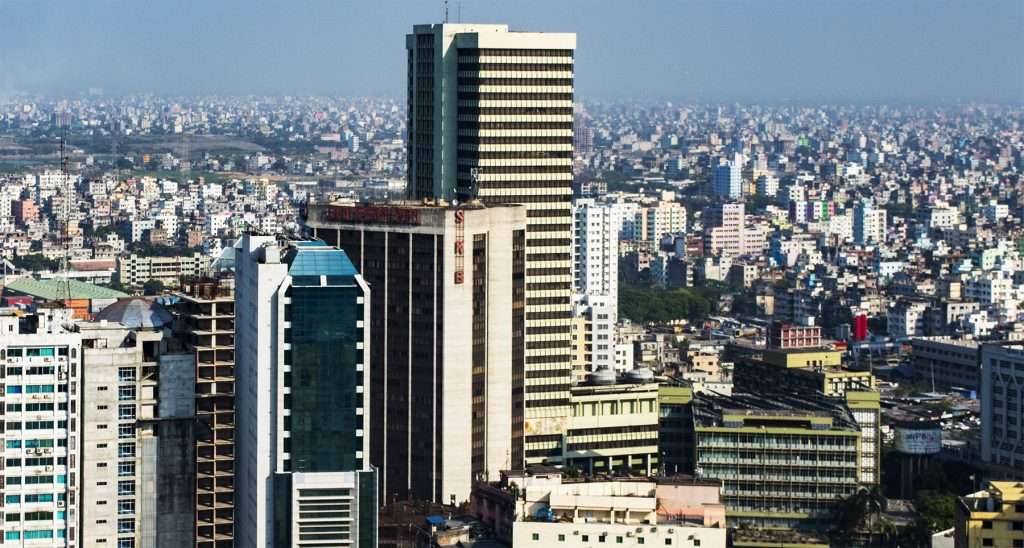
Etymology of Dhaka City
The name “Dhaka” has multiple theories regarding its origin. Some historians suggest it derives from the Sanskrit word “Dhakka,” meaning watchtower, while others believe it is named after the Dhakeshwari Temple. Another theory links it to the Bengali term for a type of drum, reflecting the city’s cultural vibrancy. Regardless of its origins, the name Dhaka resonates with a profound historical and cultural legacy.
Historical Eras
Kamarupa Kingdom
Dhaka’s early history traces back to the Kamarupa Kingdom, which ruled parts of Assam and Bengal from the 4th to the 12th centuries. This period saw the initial urbanization of the region, laying the foundation for Dhaka’s future growth.
Pala Empire
During the Pala Empire (8th to 12th centuries), Dhaka flourished as a significant center of Buddhism. The Palas were known for their patronage of art, culture, and religion, which contributed to the cultural richness of Dhaka. The empire’s extensive trade networks also helped Dhaka become an important commercial hub.
Sena Kingdom
Following the decline of the Pala Empire, the Sena dynasty took control in the late 12th century. The Senas, predominantly Hindu, introduced significant architectural and social changes, many of which influenced the city’s layout and cultural landscape.
Sultanate Period
The Sultanate period began in the 14th century, marking the advent of Islamic rule in Bengal. Dhaka started to gain prominence due to its strategic location and burgeoning trade. This period saw the construction of numerous mosques, madrasas, and forts, establishing Dhaka as an influential Islamic city.

Mughal Rule and Rise as the Capital of Bengal
Economic Boom
The Mughal era, beginning in the early 17th century, was a golden age for Dhaka. Under Mughal rule, Dhaka became the capital of Bengal and a central hub for the region’s lucrative textile trade. The city’s economy boomed, driven by the production and export of the famous Dhaka muslin.
Expansion and Importance
Dhaka’s significance grew as the Mughals expanded their empire. The city’s strategic position on the Buriganga River facilitated trade and communication. The Mughals developed extensive infrastructure, including roads, bridges, and caravanserais, which enhanced Dhaka’s connectivity and economic prosperity.
Portuguese Settlements
The 16th and 17th centuries also saw the arrival of Portuguese traders, who established settlements in Dhaka. Their presence added a new dimension to the city’s cosmopolitan nature, influencing local commerce and culture.
Nawab Era and Armenian Settlements
Nawab Era
The decline of Mughal power in the 18th century led to the rise of local rulers, including the Nawabs of Bengal. The Nawabs continued to foster Dhaka’s economic and cultural development, albeit under increasing pressure from European colonial powers.
Armenian Settlements
During this period, Armenian traders settled in Dhaka, contributing significantly to the city’s trade and economy. They established businesses, built churches, and integrated into the local society, leaving a lasting legacy.
Post-Armenian Settlements: Muslim Elites in Dacca
After the Armenians, Muslim elites began to dominate Dhaka’s social and political scene. This era saw the rise of influential families who played pivotal roles in the city’s governance and cultural affairs. Their patronage helped preserve Dhaka’s rich heritage during times of change.
Colonial Period
British East India Company Rule (1793–1857)
The British East India Company took control of Bengal in the late 18th century, marking the beginning of a new era for Dhaka. The company’s rule brought both challenges and opportunities. While traditional industries declined, the British introduced modern infrastructure and administrative systems that transformed Dhaka into a colonial city.
Rise of Dhaka Nawab Estate
The Nawab Estate emerged as a significant power during British rule. The Nawabs of Dhaka, particularly Khwaja Abdul Ghani, played crucial roles in urban development, building roads, schools, and hospitals, and promoting civic amenities.
British Raj Rule (1858–1947)
Under the British Raj, Dhaka continued to evolve. The introduction of railways, telegraphs, and modern educational institutions marked this period. Dhaka became a center for political activity, with the rise of movements advocating for Indian independence.
Modern Era
East Bengal’s (later East Pakistan’s) Capital (1947–1971)
In 1947, Dhaka became the capital of East Bengal, later East Pakistan, following the partition of India. This period was marked by significant political and social upheaval, culminating in the Bangladesh Liberation War of 1971.
Post-Independence of Bangladesh (1971–Present)
Since becoming the capital of independent Bangladesh in 1971, Dhaka has experienced rapid growth and development. The city has expanded dramatically, both in terms of population and infrastructure. Today, Dhaka is a bustling metropolis, known for its vibrant culture, economic dynamism, and rich historical heritage.
Conclusion
From its ancient roots in the Kamarupa Kingdom to its status as the capital of modern Bangladesh, Dhaka’s history is a tapestry of cultural richness and economic resilience. The city’s journey through various empires, colonial rule, and independence has shaped it into a unique blend of tradition and modernity. As Dhaka continues to grow and evolve, it remains a testament to the enduring spirit of its people and their ability to adapt and thrive amidst change.
See Also
- History of Bangladesh
- Bengal Sultanate
- Mughal Empire
References
- Ahmed, Nazimuddin. Discover the Monuments of Bangladesh. University Press Limited, 1984.
- Eaton, Richard M. The Rise of Islam and the Bengal Frontier, 1204-1760. University of California Press, 1993.
- Taylor, James. A Sketch of the Topography and Statistics of Dacca. London, 1840.
Bibliography
- Sen, Sailendra Nath. Ancient Indian History and Civilization. New Age International, 1999.
- Hasan, Perween. Sultans and Mosques: The Early Muslim Architecture of Bangladesh. I.B. Tauris, 2007.
- Mookherji, Radha Kumud. The Pala-Sena Schools of Sculpture. University of Michigan, 1954.
The Bay of Bengal: A Comprehensive Overview
The Bay of Bengal, the northeastern part of the Indian Ocean, is one of the most significant bodies of water in the world. It is bordered by India and Sri Lanka to the west, Bangladesh to the north, Myanmar to the east, and the Andaman and Nicobar Islands to the south. This vast bay covers approximately 2.17 million square kilometers and plays a crucial role in the regional and global ecosystem.
Background
Geographical Overview: The Bay of Bengal is the largest bay in the world. It stretches over 1,600 kilometers from north to south and about 2,100 kilometers from east to west. The bay’s depth varies, with the deepest point being the Sunda Trench at about 7,725 meters. The bay is fed by numerous major rivers, including the Ganges, Brahmaputra, and Irrawaddy, which deposit significant amounts of sediment, creating rich delta regions.
Historical Context: Historically, the Bay of Bengal has been a melting pot of cultures, commerce, and conflict. Ancient maritime trade routes connected the bay to Southeast Asia, the Middle East, and beyond. The bay was also a crucial battleground during World War II, with significant naval battles taking place. Today, it continues to be a vital region for commerce, culture, and geopolitics.
Significance
Economic Importance: The Bay of Bengal is a vital economic hub. It supports major ports such as Kolkata, Chennai, and Chittagong, which are crucial for international trade. The bay is rich in natural resources, including fish, oil, and natural gas. These resources are essential for the economies of the surrounding countries. The fishing industry, in particular, provides livelihoods for millions of people in India, Bangladesh, and Myanmar.
Geostrategic Importance: The strategic location of the Bay of Bengal cannot be overstated. It serves as a critical maritime route for global trade, connecting the Middle East with Southeast and East Asia. The bay’s proximity to key chokepoints like the Strait of Malacca makes it a strategic military interest for regional powers and global superpowers alike. Naval bases and patrols in the bay are pivotal for maintaining regional security and ensuring the free flow of commerce.
Religious Importance: The Bay of Bengal holds significant religious and cultural importance. For Hindus, the confluence of the Ganges River with the bay is a sacred site, known as the Ganga Sagar. Pilgrims gather here annually for the Ganga Sagar Mela, one of the most significant religious festivals in India. Similarly, the bay is mentioned in various Buddhist texts, underscoring its cultural and spiritual relevance in the region.
Key Features
Oceanography: The oceanography of the Bay of Bengal is unique due to its monsoon-driven weather patterns, complex current systems, and diverse marine ecosystems. The bay experiences significant seasonal variations in temperature and salinity, influenced by the monsoon rains and river discharges. These variations create rich habitats for marine life, making the bay one of the most productive fishing grounds in the world.
Transboundary Issues
Ecological Degradation: The Bay of Bengal faces significant ecological challenges. Overfishing, habitat destruction, and climate change are threatening the bay’s biodiversity. The depletion of fish stocks due to overexploitation has severe consequences for the local communities that depend on fishing for their livelihoods.
Fisheries Overexploitation: The increasing demand for seafood has led to the overexploitation of fisheries in the Bay of Bengal. This overfishing has resulted in declining fish populations, disrupting the ecological balance and threatening the food security of millions of people. Sustainable fishing practices and effective management policies are urgently needed to address this issue.
Marine Habitats Degradation: Critical marine habitats such as coral reefs, mangroves, and seagrass beds are under threat in the Bay of Bengal. These habitats are essential for maintaining biodiversity, protecting coastlines, and supporting fisheries. Human activities, such as coastal development, pollution, and destructive fishing practices, are causing significant degradation of these habitats.
Environmental Degradation: The overall environmental health of the Bay of Bengal is in decline. Pollution from industrial activities, agricultural runoff, and untreated sewage is contaminating the water, affecting marine life and human health. Addressing these environmental challenges requires coordinated efforts from all the countries bordering the bay.
Environmental Hazards
Pollution and Water Quality: Pollution is a major environmental hazard in the Bay of Bengal. Industrial waste, plastic debris, and oil spills are contaminating the water, threatening marine life and human health. Initiatives to improve waste management, reduce plastic use, and clean up polluted areas are crucial for restoring the bay’s water quality.
Tropical Storms and Cyclones: The Bay of Bengal is notorious for its tropical storms and cyclones. These severe weather events cause significant loss of life and property damage in the coastal regions. Countries bordering the bay have invested in early warning systems, cyclone shelters, and disaster preparedness measures to mitigate the impact of these natural disasters. However, the increasing frequency and intensity of these storms due to climate change pose a growing threat.
Conclusion
The Bay of Bengal is a region of immense economic, strategic, and cultural importance. However, it faces numerous challenges, including ecological degradation, overfishing, habitat destruction, pollution, and severe weather events. Addressing these issues requires a collaborative approach involving all the countries bordering the bay. Sustainable development, effective management policies, and international cooperation are essential for preserving the health and vitality of the Bay of Bengal for future generations.
In 2024, advancements in artificial intelligence (AI) can play a pivotal role in addressing these challenges. AI can enhance monitoring and data collection, improve predictive models for weather events, optimize fishing practices, and aid in pollution management. By leveraging AI, we can develop innovative solutions to protect and sustain the Bay of Bengal, ensuring it remains a vital resource for the millions of people who depend on it.
This comprehensive overview highlights the critical significance of the Bay of Bengal and underscores the need for concerted efforts to address the environmental and socio-economic challenges it faces. Through sustainable practices and technological innovations, we can ensure the bay continues to thrive as a vital ecological and economic resource.

